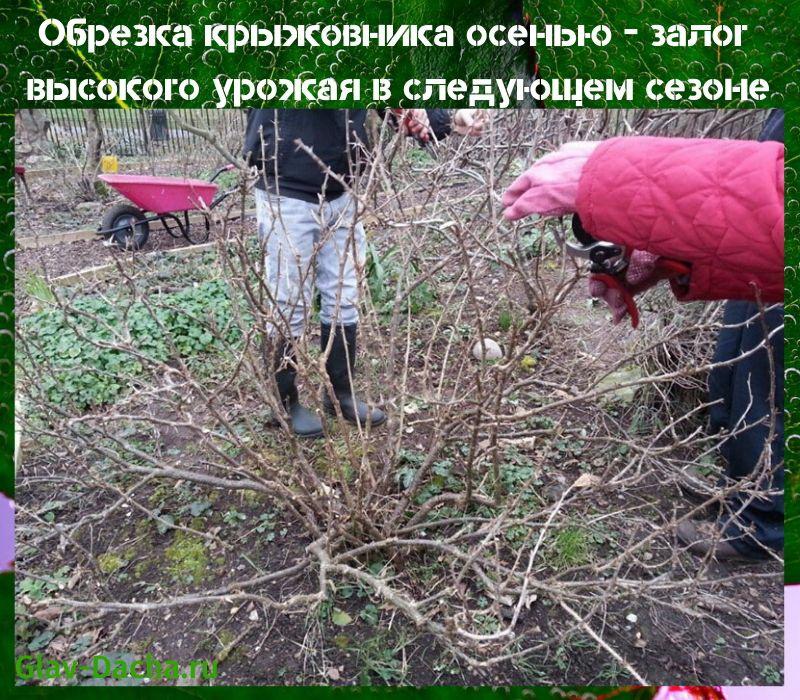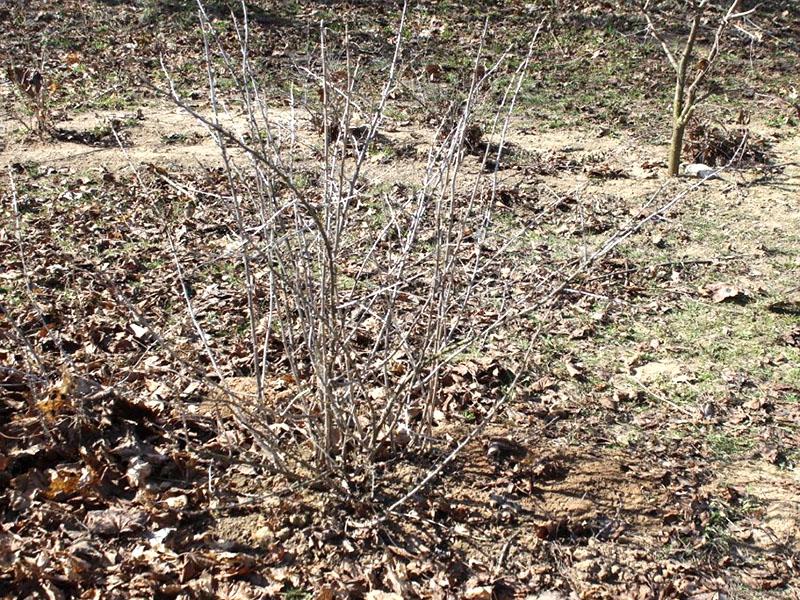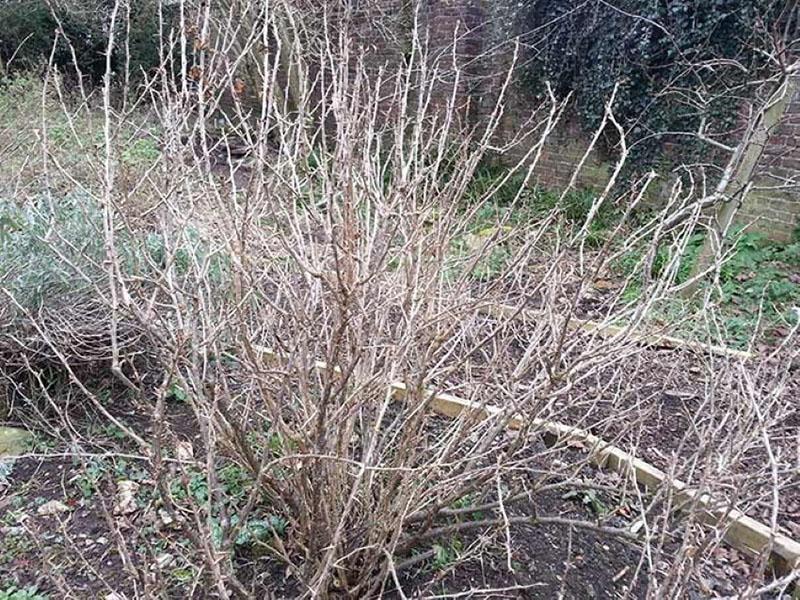Pruning gooseberries in the fall is the key to a high harvest next season
 Delicious gooseberries with aromatic and sweet pulp are ideal for making amazing jam and more. Pruning gooseberries in the fall is one of the most important and necessary procedures to harvest bountiful harvests every year. This culture is distinguished by rapid growth, giving a huge number of young shoots per season. They thicken the bush, which leads to crushing of the berries and a decrease in yield in general. In addition, these plants start to hurt. An autumn haircut will help to avoid this situation. By planting just a couple of bushes and properly regulating fruiting by pruning, you will provide the whole family with vitamins. And also prevent premature aging of the plant and protect it from possible diseases.
Delicious gooseberries with aromatic and sweet pulp are ideal for making amazing jam and more. Pruning gooseberries in the fall is one of the most important and necessary procedures to harvest bountiful harvests every year. This culture is distinguished by rapid growth, giving a huge number of young shoots per season. They thicken the bush, which leads to crushing of the berries and a decrease in yield in general. In addition, these plants start to hurt. An autumn haircut will help to avoid this situation. By planting just a couple of bushes and properly regulating fruiting by pruning, you will provide the whole family with vitamins. And also prevent premature aging of the plant and protect it from possible diseases.
Benefits of Autumn Pruning

However, the fall haircut has other benefits as well. First of all, shrubs that have grown over the summer become a refuge for pests and various fungi. And there is no need for them to winter in a dense crown. And also randomly growing young shoots impedes the access of light and air circulation. This weakens the gooseberry, which affects both the general "well-being" and future fruiting.
Autumn pruning gooseberry will allow you to form a plant now, without waiting for spring. Removing unnecessary branches will save him from having to feed too many shoots. Accordingly, the bush will enter the winter more robust, and in the next season will give a better harvest.
Pruning gooseberries in autumn - when you can do it
 Do not rush to prune thorny bushes immediately after picking the berries. Cutting too early will only give an impetus to the growth of young growth. Warm weather will contribute to this. Such shoots will weaken the plant, and they themselves will die in winter from frost, without having time to woody. But pruning too late will not do the plant good. It will not have time to recover after such a painful procedure that it will affect the decrease in winter hardiness.
Do not rush to prune thorny bushes immediately after picking the berries. Cutting too early will only give an impetus to the growth of young growth. Warm weather will contribute to this. Such shoots will weaken the plant, and they themselves will die in winter from frost, without having time to woody. But pruning too late will not do the plant good. It will not have time to recover after such a painful procedure that it will affect the decrease in winter hardiness.
It is necessary to prune gooseberries towards the end of autumn, after they have dropped their foliage. But do not delay - before the arrival of frost, the plant should have a couple of weeks in stock for the sections to tighten.
Tentatively, the autumn haircut falls on the month of October. Dates may vary depending on the region of cultivation (early October or November).
Pruning gooseberries in autumn - types

Depending on the goal, pruning can be:
- Formative - carried out in the first five years of the plant's life after planting.
- Sanitary - implies the complete removal of all diseased and damaged shoots.
- Thinning (it is also lightening) - is applied to already formed shrubs aged 5 to 10 years. Its purpose is to remove improperly growing branches (inside the crown, intersecting or lying on the ground).
- Rejuvenating - used for bushes over the age of 10, if you want to keep the variety.
Of all types, only sanitary pruning can be carried out regardless of the season, including in summer.If the bush is sick, get rid of the damaged shoots immediately to prevent infection of the rest.
Tools - selection and preparation
 The main assistant to the gardener when pruning trees and shrubs is a good secateurs... For gooseberries, it is also suitable only if you are still growing young plants. With their thin shoots and sparse crown, it is easy to deal with pruning shears.
The main assistant to the gardener when pruning trees and shrubs is a good secateurs... For gooseberries, it is also suitable only if you are still growing young plants. With their thin shoots and sparse crown, it is easy to deal with pruning shears.
But for pruning old, especially neglected, bushes, it is better to take a lopper. He will remove lignified strong branches without stress. In addition, it will reach them in the depths of the crown, which is important, given the huge number of sharp thorns. A special small saw with a handle will help to remove dry thick branches.
Make sure all tools are sharp, otherwise they will leave a laceration. Such a cut takes a long time to heal. After each bush, use a pruner or lopper... This is especially important if the gooseberry was sick. Using the same tool for a sick and healthy plant puts the latter at risk of being infected as well.
Pruning gooseberries in autumn - we form a young bush
 The thorny culture is distinguished by its extreme vitality. She not only grows young branches at a tremendous pace, but also grows quickly after shearing. This allows you to experiment and, if desired and necessary, change the natural form of the shrub. Moreover, it can be formed in a maximum of 5 years. Then you will only have to maintain and adjust the crown.
The thorny culture is distinguished by its extreme vitality. She not only grows young branches at a tremendous pace, but also grows quickly after shearing. This allows you to experiment and, if desired and necessary, change the natural form of the shrub. Moreover, it can be formed in a maximum of 5 years. Then you will only have to maintain and adjust the crown.
Having planted a gooseberry in the country, you can give it a shape and regulate it in one of three ways:
- classic;
- standard;
- trellis.
Regardless of which pruning method is used, cut it correctly. They should be located 1.5 cm above the bud, while only the one that is located outside the bush.
Then the side branches will also grow in the same direction. When cut over the bud, directed inward, and the twigs will grow into the crown, thickening it.
Classic gooseberry shaping
 With this method, the bush retains its natural shape with a spreading crown. Your goal is to ensure that it is well lit and ventilated, and that the branches do not interfere with each other. According to gardeners, classic pruning allows you to take the richest harvest with large berries.
With this method, the bush retains its natural shape with a spreading crown. Your goal is to ensure that it is well lit and ventilated, and that the branches do not interfere with each other. According to gardeners, classic pruning allows you to take the richest harvest with large berries.
The classic shaping is suitable for beginner gardeners. Formation begins from the first year. In the year of planting, shorten the shoots of the seedling, leaving no more than 4 buds. If there are sick and dry ones, cut them out completely.
Carry out further shaping pruning every autumn, observing the following scheme:
- First year. Choose the 3 strongest shoots - these will be the skeletal branches of the crown. Shorten them by 1/3.
- Second year. Young branches will grow on the left branches during the season. Also cut off the tops on them to stimulate branching. Thin the emerging young root growth, leaving no more than 4 branches and shortening them in half.
- Third year. Remove the root growth, leaving 3 more strongest branches and shortening them. On last year's skeletal branches with side shoots, remove 1/3 from the latter.
- Fourth year. The young bush has about 12 branches. Remove the shoots, shorten the tops from last year's growth and remove a third of the side shoots.
- Fifth and subsequent years. Watch out for branches that dry up. Cut them out in time, leaving a couple of shoots from the young growth for replacement. Don't forget to cut the tops off. Also carefully inspect the remaining branches, removing incorrectly growing ones.
An adult gooseberry bush under the age of 10 years is enough to have up to 24 fruiting branches. Your next task is to maintain shape by lightening and sanitary pruning.
How to form a gooseberry on a stem
 The advantage of a standard plant is that it takes up much less space. This pruning is very popular when growing crops in small plots.
The advantage of a standard plant is that it takes up much less space. This pruning is very popular when growing crops in small plots.
Turning a gooseberry into a compact tree is not difficult by following these instructions step by step every year:
- Choose the smoothest and thickest shoot growing in the center - this is the trunk (bole) of the future tree. Cut the rest at the root.
- Place a support next to it - an iron pipe or a sturdy wooden peg. Attach the left trunk to it.
- The next year, shorten the top so that the trunk begins to build up the "crown" - the side branches.
- Reduce last year's growth by 1.2 annually, and leave no more than 3-4 pieces from the young.
- Remove all root growth.
Gooseberries on a stem also yield a good harvest, but live less.
If a classically formed bush can grow for about 20 years, then a standard bush - no more than 12. In addition, it is weaker, is more often sick and hibernates worse.
Growing gooseberries on a trellis - features of pruning
 The trellis is a good solution for both you and the bush itself. Harvesting is much easier, minimizing the "injury" from thorns, because the branches will be tied up. And the shoots themselves will receive more light and air, and will hurt less often.
The trellis is a good solution for both you and the bush itself. Harvesting is much easier, minimizing the "injury" from thorns, because the branches will be tied up. And the shoots themselves will receive more light and air, and will hurt less often.
To shape the gooseberry on a trellis:
- Initially, plant the seedlings in a row, leaving at least 1 m between them.
- Set posts at the beginning and end of the row.
- Pull a wire between them at a height of 50 cm from the soil level - this is the first tier of the trellis.
- Pull the second tier at a height of 80 cm.
- Fix the top wire at a height of 1 m from the ground.
- In growing gooseberries, gradually tie the shoots to the desired tier.
- In autumn, remove root growth, thickening and diseased shoots.
- Shorten last year's gain by 1/3.
Rules for autumn sanitary and lightening pruning
 A sanitary haircut can be done both in autumn and spring. It is aimed at maintaining a given shape of the shrub, as well as removing "dead" and diseased branches.
A sanitary haircut can be done both in autumn and spring. It is aimed at maintaining a given shape of the shrub, as well as removing "dead" and diseased branches.
In order for the bush to develop normally, you must be sure to completely cut out such shoots:
- dry;
- black;
- affected by the fungus;
- broken;
- intersecting with each other (remove one if the second grows correctly);
- lying on the ground;
- root and horizontal growth.
Do not get carried away with young growth - a few branches should remain to replace the old one.
Make sure that the lower shoots do not take root. The cuttings take nutrients from the mother plant, which reduces the yield. But if you need to breed a variety, this is a great opportunity. Then several lower shoots can be dug in so that they quickly build up their own root system.
Pruning gooseberries in fall for rejuvenation
 After 10 years, the bush becomes huge, making it difficult to harvest inside the crown. And its skeletal part is aging, and completely ceases to set berries, or they become small and sour.
After 10 years, the bush becomes huge, making it difficult to harvest inside the crown. And its skeletal part is aging, and completely ceases to set berries, or they become small and sour.
In order to preserve the variety and restore fruiting, anti-aging pruning is carried out in the fall:
- Remove 1/3 of the old shoots that have been bearing fruit.
- Cut out the root growth completely.
- Leave some of the young growth growing from the ground, choosing the thickest shoots. Shorten them, leaving no more than 20 cm. Remove thin branches completely.
Anti-aging pruning is carried out in several stages, over 2-3 years. You cannot cut out all the old branches at one time, only no more than 1/3 of the crown, otherwise the bush will disappear.
Caring for gooseberries after pruning
 Regardless of what type of pruning was used, after this procedure the bush is weakened and needs additional care. Be sure to treat all sections with garden pitch so that they do not become a place for the spread of the disease.
Regardless of what type of pruning was used, after this procedure the bush is weakened and needs additional care. Be sure to treat all sections with garden pitch so that they do not become a place for the spread of the disease.
Instead of garden varnish, you can use a solution of urea and ordinary activated carbon. For 70 ml of urea, 1 tablet is enough.
Further care of the pruned shrub consists of the following procedures:
- Moisture-charging irrigation. Pour at least 2 buckets of standing water under an adult plant.
- Top dressing.Add organic matter (15 kg of humus) with mineral fertilizers (200 g of superphosphate and 40 g of potassium).
- Preventive treatment. To protect the shrub from pests, spray it with Bordeaux mixture.
- Mulching... A "blanket" of peat or compost will help a plant weakened by shearing to survive the winter. Cover the trunk circle with them.
If the gooseberry has been affected by a fungal disease, spray it with a fungicide after cutting off diseased branches.
Such drugs as Coronet, Teldor, Antracop have proven themselves well. At the same time, treat the soil under the bush.
Thus, pruning gooseberries in the fall will help not only free up time for spring work. At the end of the season, it is important to carefully inspect all the berries. Over the summer, pests and fungi could appear in them. By promptly removing the affected parts, you will prevent the spread of diseases and insects. Also, direct the development of culture in the right direction. The rapid growth in this case gives gooseberries a lot of trouble. The shrub thickens quickly and it is difficult to get inside the crown to pick berries. Timely thinning will make harvesting easier and keep crop performance high.